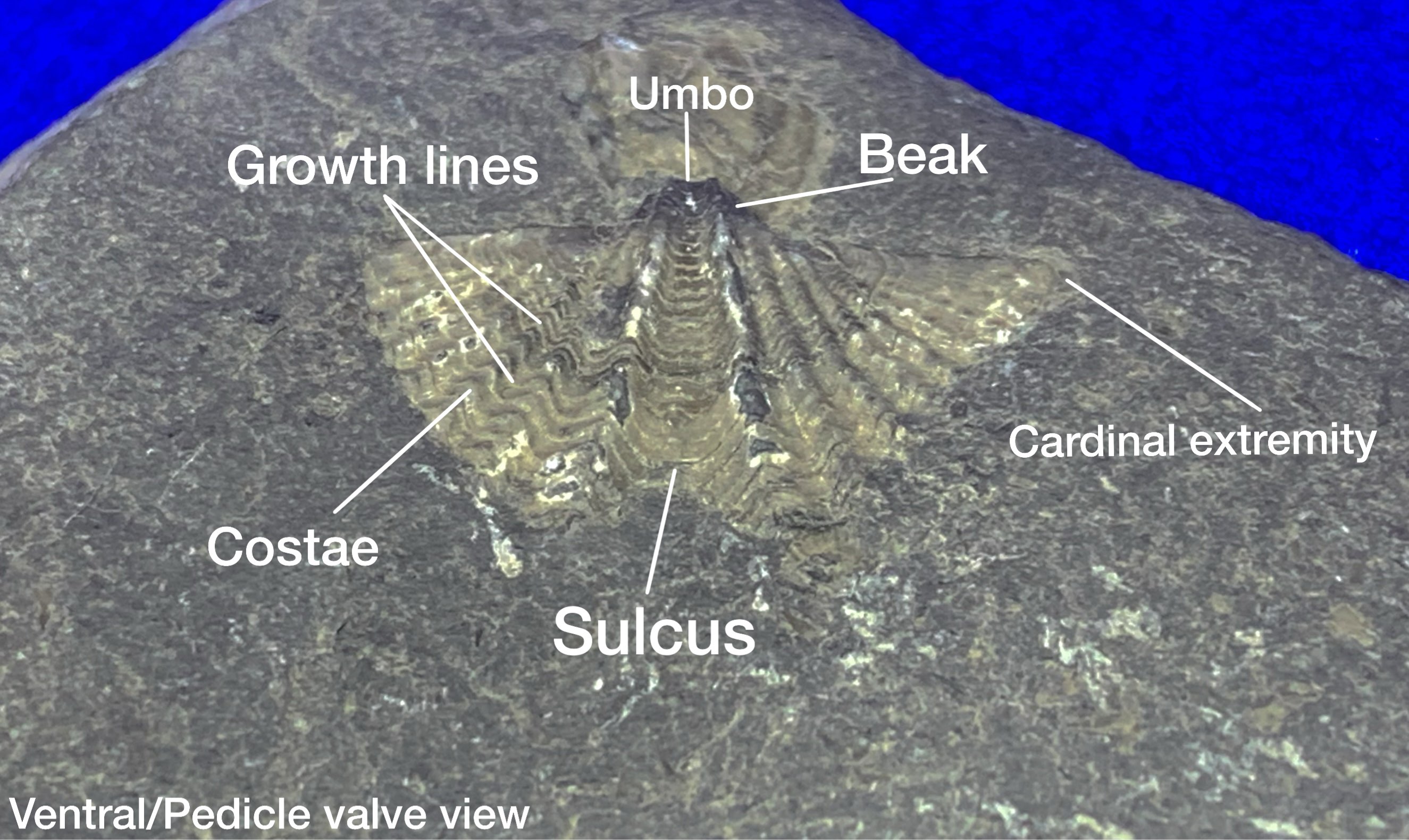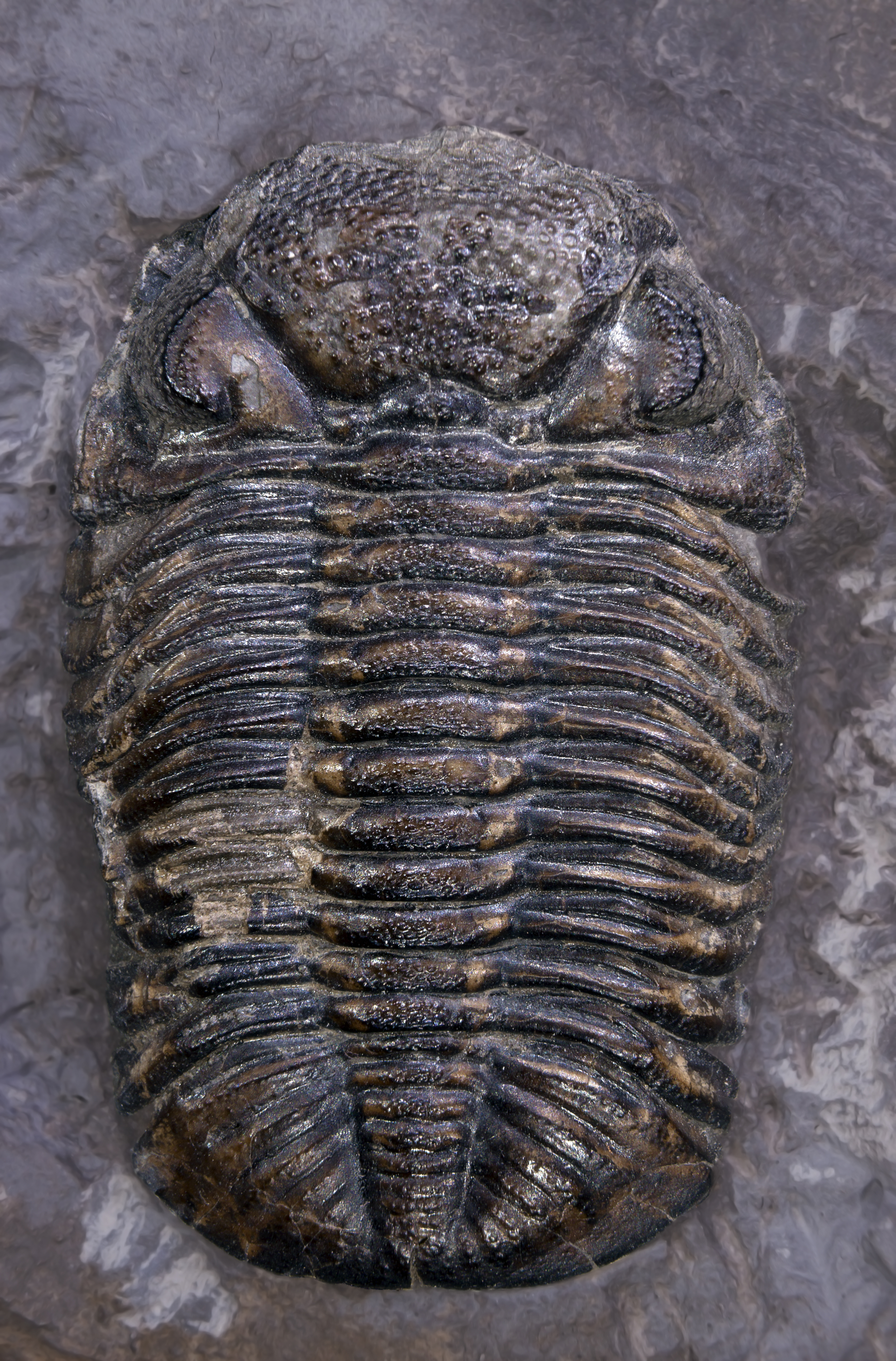|
Mucrospirifer Mucronatus
''Mucrospirifer mucronatus'' is a species of articulate brachiopod from the middle Devonian. The species serves as an index fossil for the middle Devonian. Discovery and history ''Mucrospirifer mucronatus'' was discovered by Timothy Abbott Conrad in 1841 as ''Delthyris mucronatus''. Until 1931, most species in the genus ''Mucrospirifer'' would be classified under the genus ''Spirifer''. Amadeus William Grabau Amadeus William Grabau (January 9, 1870 – March 20, 1946) was an American geologist who worked in China. Biography Grabau's grandfather, J.A.A. Grabau, led a group of dissident Lutheran immigrants from Germany to Buffalo, New York. His educa ... would first propose the genus ''Mucrospirifer'' in 1931, using ''Mucrospirifer mucronatus'' as the type species. Description ''Mucrospirifer mucronatus'' typically has a biconvex shell. The shell is covered in ribs (known as costae). The cardinal extremities on the posterior are elongated in adolescent specimens to form ... [...More Info...] [...Related Items...] OR: [Wikipedia] [Google] [Baidu] |
Windom Shale
The Windom shale or Windom member is a member of the Moscow formation in New York. It preserves fossils going back to the Givetian stage of the middle Devonian. The Windom shale is widely known for its high quality trilobite fossils. History Early Study One of the first people who may have described the scientific importance of the Windom was Jacob Green. In his book ''A monograph of the trilobites of North America: with coloured models of the species'', he mentions an abundance of “'' Calymene bufo''” in similar conditions to that of the Windom. Later on in 1935, David M. Delo’s “Revision of the Phacopid trilobites” would name the genus '' Greenops'' in honor of Jacob Green’s work. In 1840, the geologist Lardner Vanuxem first described the “Hamilton Formation” in Hamilton, New York. The American paleontologist James Hall, would be very influential in early scientific examination of the Hamilton group. American geologist and malacologist, Timothy Abbott C ... [...More Info...] [...Related Items...] OR: [Wikipedia] [Google] [Baidu] |
Brachiopod
Brachiopods (), phylum Brachiopoda, are a phylum of trochozoan animals that have hard "valves" (shells) on the upper and lower surfaces, unlike the left and right arrangement in bivalve molluscs. Brachiopod valves are hinged at the rear end, while the front can be opened for feeding or closed for protection. Two major categories are traditionally recognized, articulate and inarticulate brachiopods. The word "articulate" is used to describe the tooth-and-groove structures of the valve-hinge which is present in the articulate group, and absent from the inarticulate group. This is the leading diagnostic skeletal feature, by which the two main groups can be readily distinguished as fossils. Articulate brachiopods have toothed hinges and simple, vertically-oriented opening and closing muscles. Conversely, inarticulate brachiopods have weak, untoothed hinges and a more complex system of vertical and oblique (diagonal) muscles used to keep the two valves aligned. In many brachiopods, ... [...More Info...] [...Related Items...] OR: [Wikipedia] [Google] [Baidu] |
Index Fossil
Biostratigraphy is the branch of stratigraphy which focuses on correlating and assigning relative ages of rock strata by using the fossil assemblages contained within them.Hine, Robert. “Biostratigraphy.” ''Oxford Reference: Dictionary of Biology'', 8th ed., Oxford University Press, 2019. The primary objective of biostratigraphy is ''correlation'', demonstrating that a particular horizon in one geological section represents the same period of time as another horizon at a different section. Fossils within these strata are useful because sediments of the same age can look completely different, due to local variations in the sedimentary environment. For example, one section might have been made up of clays and marls, while another has more chalky limestones. However, if the fossil species recorded are similar, the two sediments are likely to have been laid down around the same time. Ideally these fossils are used to help identify biozones, as they make up the basic biostratigraphy ... [...More Info...] [...Related Items...] OR: [Wikipedia] [Google] [Baidu] |
Timothy Abbott Conrad
Timothy Abbott Conrad (June 21, 1803 in Trenton, New Jersey – August 9, 1877 in Trenton) was an American geologist and malacologist. Biography He was from early life an investigator of American paleontology and natural history, devoting himself to the study of the shells of the Tertiary and Cretaceous formations, and to existing species of mollusks. In 1831 he began the issue of a work on “American Marine Conchology,” and the year following published the first number of his “Fossil Shells of the Tertiary Formation,” which was never completed. A “Monography of the Family Unionidae” was issued between 1835 and 1847. The lithographed plates in his publications were in part his own work. He contributed many articles to the ''American Journal of Science'' and the ''Journal of the Philadelphia Academy of Science''. As one of the New York state geologists he prepared the geological report for 1837. He was paleontologist of the New York Geological Survey from 1838 until ... [...More Info...] [...Related Items...] OR: [Wikipedia] [Google] [Baidu] |
Mucrospirifer
''Mucrospirifer'' is a genus of extinct brachiopods in the class Rhynchonellata (Articulata) and the order Spiriferida. They are sometimes known as "butterfly shells". Like other brachiopods, they were filter feeders. These fossils occur mainly in Middle Devonian strata and appear to occur around the world, except in Australia and Antarctica. The biconvex shell was typically 2.5 cm long, but sometimes grew to 4 cm. The shell of ''Mucrospirifer'' has a fold, sulcus and costae. It is greatly elongated along the hinge line, which extends outward to form sharp points. This gives them a fin- or wing-like appearance. The apex area (umbo) of the pedicle valve contains a small fold for the pedicle. ''Mucrospirifer'' lived in muddy marine sediments, and were attached to the sea floor via the pedicle. The shell sometimes looks like two seashells stuck together. Species *''Mucrospirifer albanensis'' *''Mucrospirifer arkonensis'' *''Mucrospirifer bouchardi'' *'' Mucrospirifer ... [...More Info...] [...Related Items...] OR: [Wikipedia] [Google] [Baidu] |
Spirifer
''Spirifer'' is a genus of marine brachiopods belonging to the order Spiriferida and family Spiriferidae. Species belonging to the genus lived from the Middle Ordovician ( Sandbian) through to the Middle Triassic (Carnian) with a global distribution. They were stationary epifaunal suspension feeders.''Spirifer'' at .org Selected species * '' Spirifer acutiplicatus'' Hayasaka, 1933 * '' Spirifer bambadhurensis'' Diener, 1903 * ''[...More Info...] [...Related Items...] OR: [Wikipedia] [Google] [Baidu] |
Amadeus William Grabau
Amadeus William Grabau (January 9, 1870 – March 20, 1946) was an American geologist who worked in China. Biography Grabau's grandfather, J.A.A. Grabau, led a group of dissident Lutheran immigrants from Germany to Buffalo, New York. His education began in his father's parochial school in his birthplace of Cedarburg, Wisconsin, and then the public high school there. After his father became head of the Martin Luther Seminary in 1885, he finished high school in Buffalo. He took classes in the evenings while apprenticed to a bookbinder. His interest in local fossils grew. In a correspondence course in mineralogy, he impressed geologist William Otis Crosby enough to hire him at the Boston Society of Natural History in 1890, and arrange his education at Boston Latin, MIT, and Harvard. He taught at MIT and Rensselaer Polytechnic Institute early in his career. In 1901 he became a professor at Columbia University in New York. He married Barnard student Mary Antin on October 5, 1 ... [...More Info...] [...Related Items...] OR: [Wikipedia] [Google] [Baidu] |
Spiriferid Brachiopod Morphology
Spiriferida is an order of extinct articulate brachiopod fossils which are known for their long hinge-line, which is often the widest part of the shell. In some genera (e.g. ''Mucrospirifer'') it is greatly elongated, giving them a wing-like appearance. They often have a deep fold down the center of the shell. The feature that gives the spiriferids their name ("spiral-bearers") is the internal support for the lophophore; this ''brachidium'', which is often preserved in fossils, is a thin ribbon of calcite that is typically coiled tightly within the shell. Spiriferids first appear in the Late Ordovician with the appearance of ''Eospirifer radiatus''. They increased in diversity throughout the Silurian and underwent a dramatic evolutionary radiation during the Devonian period, reaching peak development in variety and numbers. Spiriferida survived the great Permian extinction, finally becoming extinct during the Early to Middle Jurassic. Fossils of this order are often preser ... [...More Info...] [...Related Items...] OR: [Wikipedia] [Google] [Baidu] |
Spiriferida
Spiriferida is an order of extinct articulate brachiopod fossils which are known for their long hinge-line, which is often the widest part of the shell. In some genera (e.g. '' Mucrospirifer'') it is greatly elongated, giving them a wing-like appearance. They often have a deep fold down the center of the shell. The feature that gives the spiriferids their name ("spiral-bearers") is the internal support for the lophophore; this ''brachidium'', which is often preserved in fossils, is a thin ribbon of calcite that is typically coiled tightly within the shell. Spiriferids first appear in the Late Ordovician with the appearance of ''Eospirifer radiatus''. They increased in diversity throughout the Silurian and underwent a dramatic evolutionary radiation during the Devonian period, reaching peak development in variety and numbers. Spiriferida survived the great Permian extinction, finally becoming extinct during the Early to Middle Jurassic. Fossils of this order are often preserved a ... [...More Info...] [...Related Items...] OR: [Wikipedia] [Google] [Baidu] |
Taxa Described In 1841
In biology, a taxon ( back-formation from '' taxonomy''; plural taxa) is a group of one or more populations of an organism or organisms seen by taxonomists to form a unit. Although neither is required, a taxon is usually known by a particular name and given a particular ranking, especially if and when it is accepted or becomes established. It is very common, however, for taxonomists to remain at odds over what belongs to a taxon and the criteria used for inclusion. If a taxon is given a formal scientific name, its use is then governed by one of the nomenclature codes specifying which scientific name is correct for a particular grouping. Initial attempts at classifying and ordering organisms (plants and animals) were set forth in Carl Linnaeus's system in ''Systema Naturae'', 10th edition (1758), as well as an unpublished work by Bernard and Antoine Laurent de Jussieu. The idea of a unit-based system of biological classification was first made widely available in 1805 in th ... [...More Info...] [...Related Items...] OR: [Wikipedia] [Google] [Baidu] |




